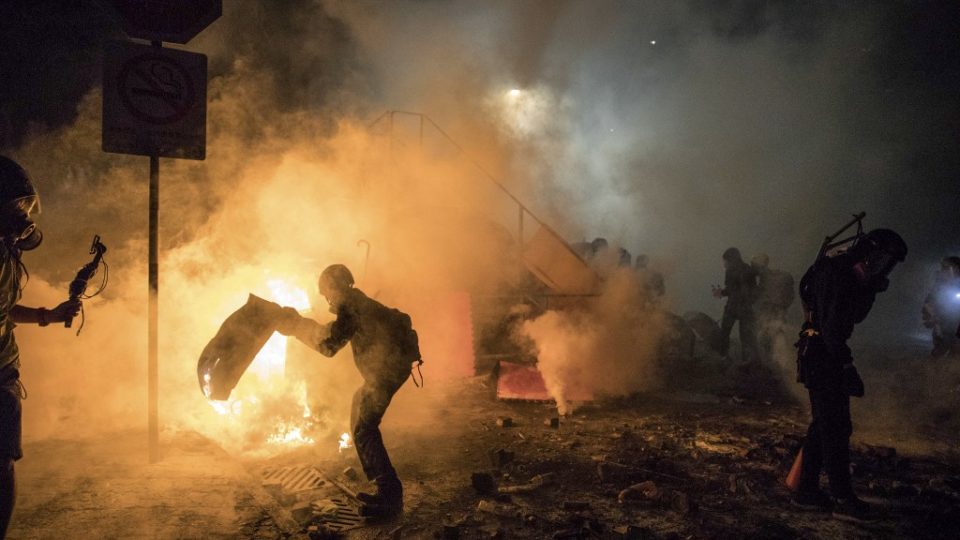Hong Kong awoke to a third straight day of chaos today following a night of intense battles between pro-democracy protesters and riot police on a university campus.
At least eight universities canceled classes today, and morning commuters were faced with closed metro stations, a suspended rail line, and dozens of cancelled bus services a day after police warned that the rule of law in the territory was on “the brink of total collapse.”
On Tuesday, the Chinese University of Hong Kong campus was the epicenter of the protests. The clashes raged well into the night, despite faculty and staff trying to mediate, with flames lighting up the night sky and dense clouds of acrid smoke.
This is simply far too heart-wrenching to watch.
Having spent four years living on campus I thought I knew its every road, every turn, every building, even in the darkness of night.
But I completely don't recognise where this is. https://t.co/xOLjPZE5dc
— Nectar Gan (@Nectar_Gan) November 12, 2019
Pitched battles also saw bricks thrown on the streets of the Central business district and fires lit in shopping malls while tear gas, water cannon, and rubber bullets were used against protesters, who responded with more bricks and petrol bombs.
The clashes followed a particularly brutal day on Monday, when police shot an unarmed protester on Hong Kong Island and a man was set on fire after apparently arguing with protesters in the New Territories.
After months of largely confining their most disruptive protests to the weekends, demonstrators angry at Beijing’s tightening control over Hong Kong have been pushing new tactics targeting the working week.
On Wednesday, road junctions across the city were littered with debris and objects placed by protesters as they heeded overnight calls put out on messaging forums to hit their local neighborhoods in a bid to keep the police stretched and distracted from the Chinese University campus.
Riot police have arrived in Mong Kok on Wednesday morning to clear up the barricades set up by protesters #HongKongProtests
Video: SCMP/Karen Zhang pic.twitter.com/DgFaHBGp44
— SCMP Hong Kong (@SCMPHongKong) November 13, 2019
In Mong Kok, one of the most regular flashpoint neighborhoods in recent months, barricades made from debris and bamboo scaffolding could be seen for hundreds of meters, choking one of the city’s main arteries. Pockets of protesters remained out and one man was beaten for taking photos of them.
In many neighborhoods, main roads were devoid of traffic, and locals formed long queues for taxis and buses.
The city’s education authorities said parents could decide whether to send children to school “due to traffic and emergencies,” while some international schools remained closed for a second straight day.
At the Chinese University campus, students held watch through the night, fearing police might return.
https://twitter.com/sumlokkei/status/1194410509182746625
Many slept on the campus sports track and in the bleachers. Others played football to pass the time as they took turns manning barricades on a bridge where the main battles earlier that night took place.
A 19-year-old volunteer medic, who gave his first name Marco, said he had lost count of how many students he treated who had been struck by rubber bullets.
“Most of the cases I received from the frontline had been shot above their chest,” he told AFP.




